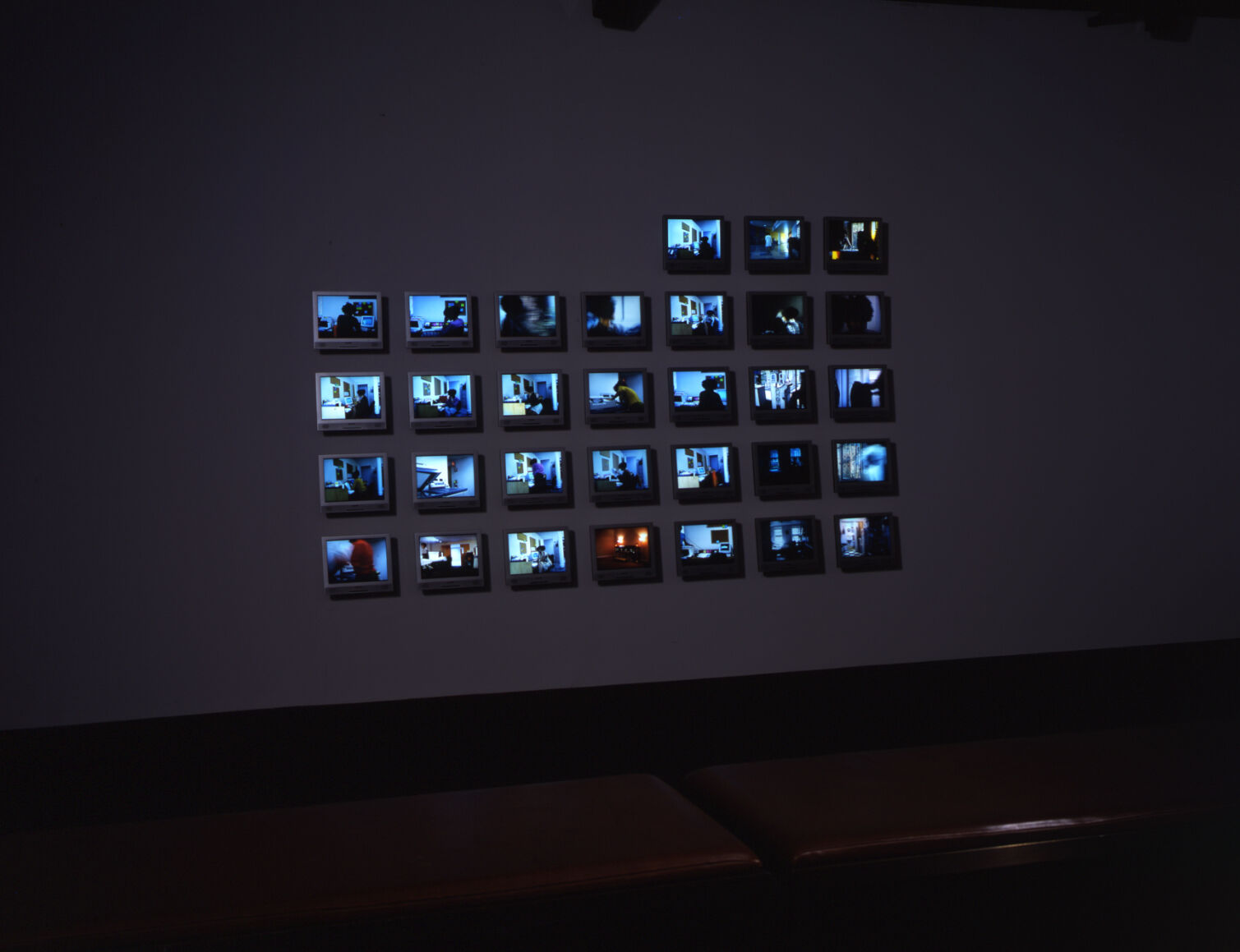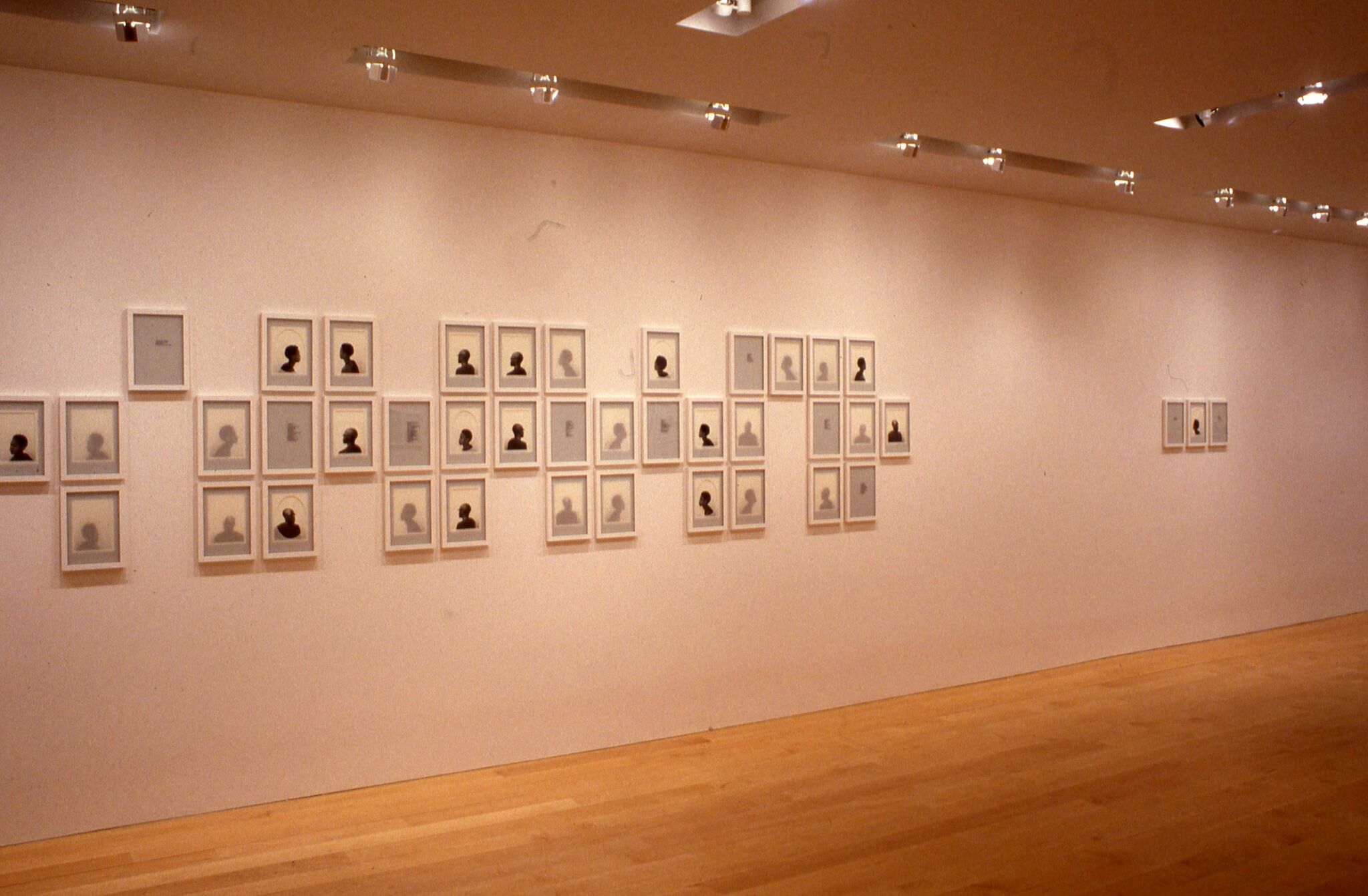Lorna Simpson
1960–
After receiving a BFA from the School of Visual Arts, New York, and an MFA from the University of California, San Diego, Lorna Simpson began in the mid-1980s to produce works combining photographs and text that draw on aspects of Conceptual art to consider themes of race, gender, and identity. Although they engage broader contexts of historical memory and visual culture, Simpson’s photo-text tableaux resist easy explication, relying instead on viewers’ interpretations to untangle their enigmatic syntheses of image and language.
2 Tracks, for example, seems to set forth a narrative in its juxtaposition of a photograph of the shoulders and close-cropped head of an African American woman, seen from the back; a pair of flanking photographs of long braids of black hair; and the words back and track, on accompanying plaques. But the relationship between these components remains unclear. The words have literal correlates (the subject’s back and the tracklike braids), but the phrase backtrack, with its connotations of reversal and regression, provokes consideration of additional meanings as African American hair, a favored motif of the artist’s, takes on loaded significance. Simpson frequently pictures her subjects from behind or crops or fragments her images—challenging the presumed objectivity of the photographic medium— and she often invokes systems of counting, indexing, or classification only to violate the order of these typologies. Both formal strategies heighten the ambiguity of her combinations of photographs and text.
In the 1990s Simpson began creating large-scale, multipanel photographic works on felt. Her practice in recent years furthers her examination of contemporary identity in the mediums of drawing, film, and video.
Introduction
Lorna Simpson (born August 13, 1960) is an American photographer and multimedia artist whose works have been exhibited both nationally and internationally. In 1990, she became one of the first African-American women to exhibit at the Venice Biennale. She came to prominence in the 1980s and 1990s with photo-text installations such as Guarded Conditions and Square Deal that questioned the nature of identity, gender, race, history and representation. Simpson continues to explore these themes in relation to memory and history using photography, film, video, painting, drawing, audio, and sculpture.
Wikidata identifier
Q6681389
Information from Wikipedia, made available under the Creative Commons Attribution-ShareAlike License . Accessed December 19, 2025.
Country of birth
United States
Roles
Artist, cinematographer, installation artist, photographer
ULAN identifier
500088695
Names
Lorna Simpson
Information from the Getty Research Institute's Union List of Artist Names ® (ULAN), made available under the ODC Attribution License. Accessed December 19, 2025.














